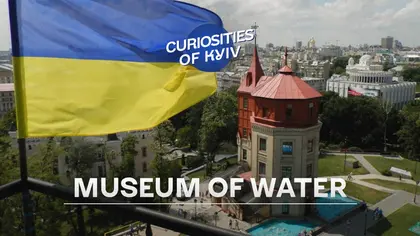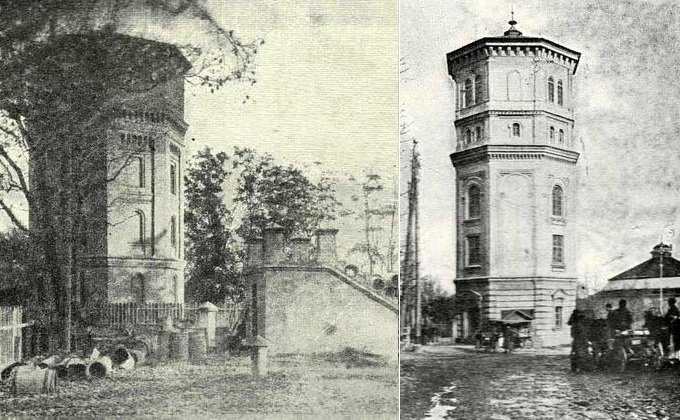One of the most visited museums in Kyiv is the Museum of Water, or the Water Information Center. It is located in the oldest water tower of Kyiv in Khreschaty Park in the center of the city. The first line of the city's water main was solemnly opened at this very place on March 1, 1872. It began the history of the capital's centralized water supply. Two old valves on the wall of the museum (from the side of the street), as well as a commemorative plaque remind of that event.
The museum is located in the restored buildings of the first Kyiv centralized waterworks – 2 water towers, built according to the project of the famous architect Alexander Schiele. The central entrance is located in the 29-meter high tower. It was built in 1875-1876 and reconstructed in 2003 according to the original drawings, including the restoration of the fire lookout tower. The neighboring tower was built in 1871-1872 and dismantled in 1939-1940. It was also restored according to the original drawings, and now the museum administration works there.
JOIN US ON TELEGRAM
Follow our coverage of the war on the @Kyivpost_official.
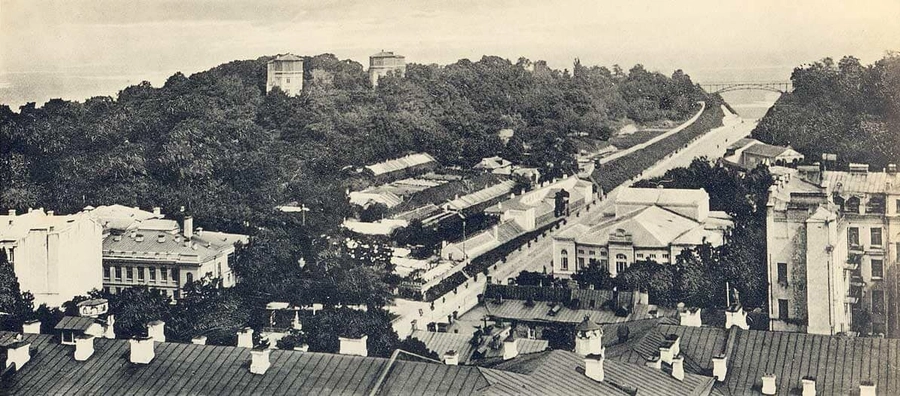 Kyiv, 1920s. Water towers on the horizon.
Kyiv, 1920s. Water towers on the horizon.
The main exhibition is located in the former underground tank for drinking water, built in 1909, after the city switched to artesian water supply in order to improve quality of water provided to Kyiv residents.
The museum officially opened on Kyiv Day, May 24, 2003, during the Fifth Ministerial Conference "Environment for Europe" held in the capital with the participation of Kyiv City State Administration and with the support of the Danish Ministry of Environment.
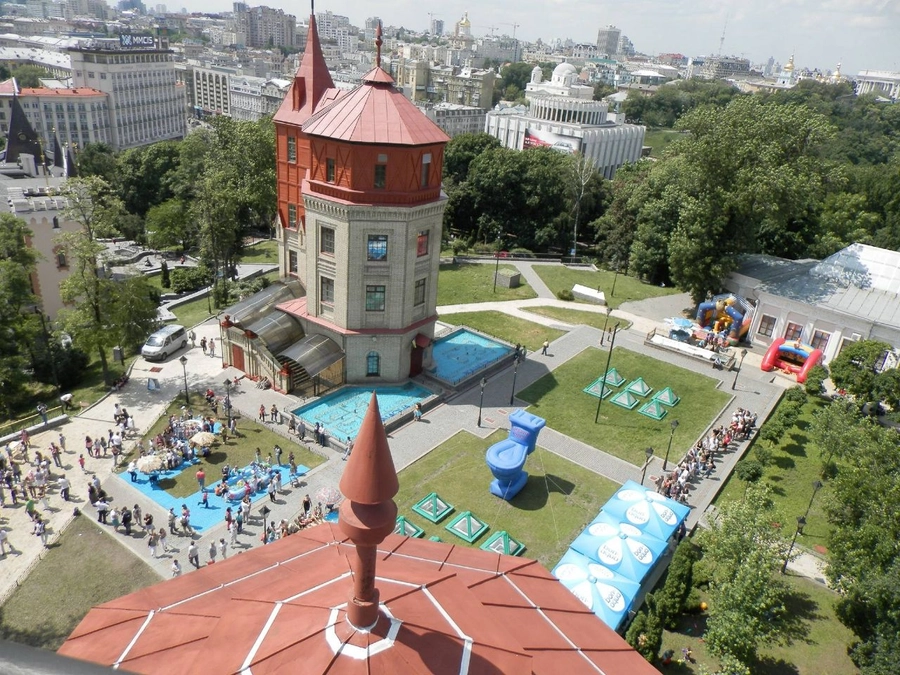 The Water Museum was opened on May 24, 2003, as part of the celebration of the Day of Kyiv. Photo from the museum's webpage.
The Water Museum was opened on May 24, 2003, as part of the celebration of the Day of Kyiv. Photo from the museum's webpage.
This is a joint project of Ukraine and Denmark and the first such museum in Ukraine and Eastern Europe. The author of the project is the architect from Denmark Karsten Møller, who is famous for his non-standard approach to design. There are many unusual elements in the museum, for example, a huge toilet, imitation of a flood in a house, a transparent sewer pipe in which garbage can be seen. The exhibition itself is built in the form of a labyrinth. To visit all the halls located on 3 levels, you need to go underground by elevator.
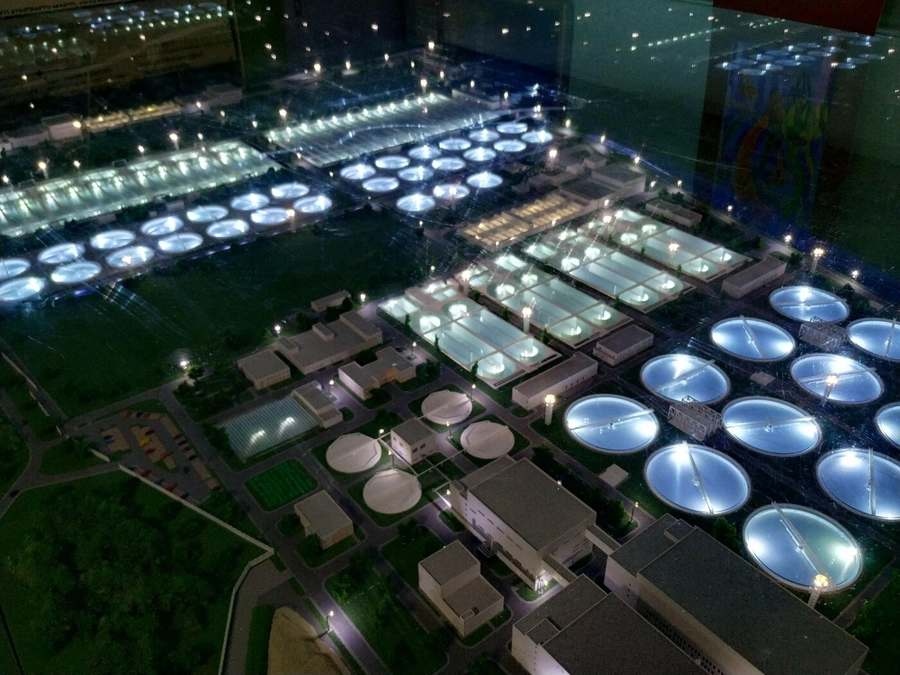 Model of the collector. Photo from open sources.
Model of the collector. Photo from open sources.
The author managed to create a real kingdom of water in all its possible manifestations, which you can observe and become one with the water element. Here you can follow the same path that water travels underground, see rain formation, geyser eruption, create your own riverbed and test the power of a water pump. You can also dive to the bottom of the ocean and admire Japanese koi carp swimming in huge aquariums. Where else can you see the models of an artesian well and a sewer collector?
The historical zone dedicated to the development of water supply in Kyiv is interesting. Authentic wooden, ceramic, cast-iron and plastic water pipes of the 18th-21st centuries, a copper commemorative plaque from one of Kyiv's water supply stations – Bulvarna – and a plaque from the opening of the station dated 1904 are considered to be among its most valuable exhibits.
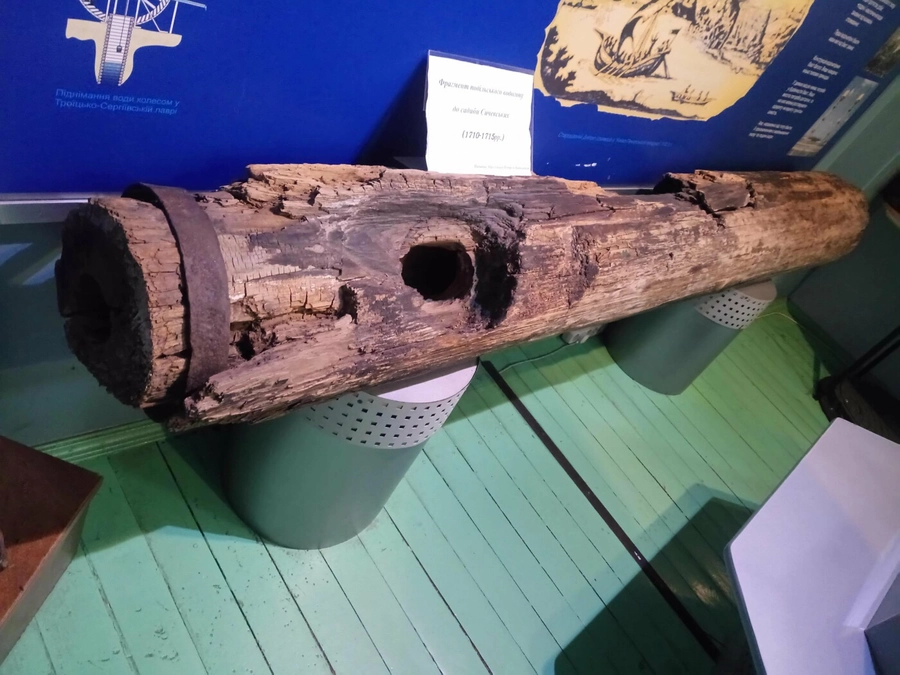 An authentic wooden pipe. Photo from open sources.
An authentic wooden pipe. Photo from open sources.
In addition, here you can learn about how Kyiv was supplied with drinking water in ancient times, how much it cost, and how the first water main was laid. An interesting document is kept here – the European Water Charter, which was adopted by the Council of Europe in 1967. Its 12 points define important rules regarding water resources, while the first point declares, "There is no life without water. It is a treasure indispensable to all human activity."
The main goal of the museum is to inform people about the hydrosphere of the Earth and water resources of Ukraine, their vulnerability and necessity for life, technologies for preparing safe drinking water in centralized water supply systems, wastewater drainage and treatment, as well as rational methods of using water resources. The exhibition is interactive: you can touch and learn everything here. After visiting the museum, the attitude to such an important resource as water, which we often do not notice and do not appreciate, changes. As you know, a person can live without water for only 2-4 days. Before getting to our faucet, water goes a long way. Therefore, its importance cannot be overestimated.
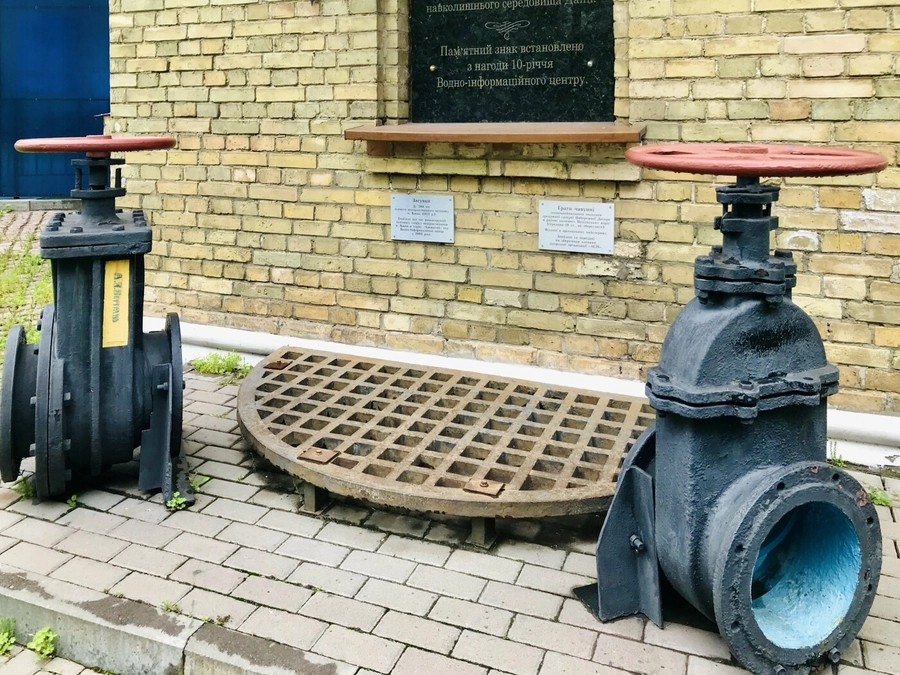 Ancient wreaths at the entrance to the museum.
Ancient wreaths at the entrance to the museum.
According to the museum administration, more than 2 million people and tourists from more than 110 countries have visited the museum. Its expositions are interesting for all age categories. A walk with a tour guide is especially informative. The museum is located at 1V Mykhailo Hrushevsky Street. Its working hours are indicated on the official website of the Water Information Center.
You can also highlight the text and press Ctrl + Enter


